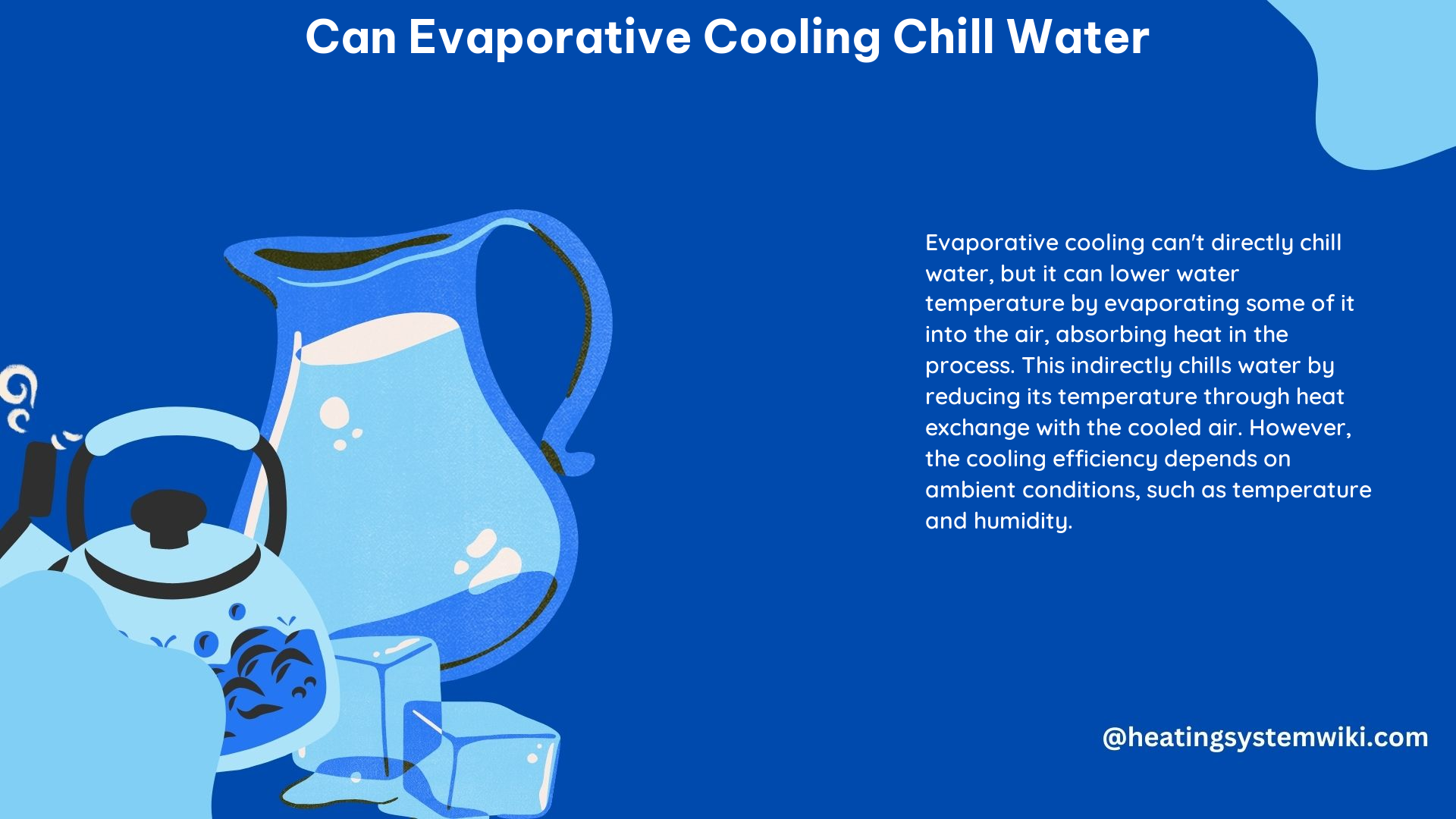Evaporative cooling is a process that can be used to chill water by utilizing the natural phenomenon of evaporation. This method works by using the air to evaporate water, which in turn takes away heat from the air and cools it down. The cooled air can then be used to chill the water, making it a cost-effective and environmentally friendly alternative to traditional cooling methods.
Technical Specifications of Evaporative Cooling for Chilling Water
To effectively chill water using evaporative cooling, the system must meet specific technical requirements. The key components of an evaporative cooling system for chilling water include:
-
Water Supply System: This system provides a consistent flow of water to the evaporative cooler, ensuring a reliable source of water for the cooling process. The water supply can be sourced from a garden hose, a water tank, or a municipal water line, depending on the specific needs and constraints of the setup.
-
Pump and Distribution System: The pump and distribution system is responsible for spraying finely atomized water in the opposite direction to the air flow through the coils. This ensures efficient heat transfer from the water to the air, which is the core of the evaporative cooling process. The pump should be capable of delivering the required water flow rate and pressure to the distribution system.
-
Heat Exchanger: The heat exchanger is the component that transfers the heat from the water to the air. This is typically a finned coil or a similar heat transfer surface that maximizes the surface area for heat exchange. The design of the heat exchanger can significantly impact the overall efficiency of the system.
-
Fan System: The fan system moves the air through the heat exchanger and distributes the cooled air to the water. The size and performance of the fan(s) must be carefully selected to ensure adequate air flow and even distribution of the cooled air.
-
Control System: The control system regulates the temperature and humidity of the air, as well as the flow of water and air. This is essential for optimizing the cooling performance and ensuring the system operates within the desired parameters. The control system may include sensors, valves, and a microcontroller or PLC to manage the various components.
It is important to note that the specific technical specifications of each component may vary depending on the size and capacity of the evaporative cooling system, as well as the environmental conditions and water quality in the installation location.
DIY Evaporative Cooling System for Chilling Water

Setting up a DIY evaporative cooling system for chilling water involves the following steps:
-
Obtain a Water Supply System: This can be as simple as a garden hose or a more sophisticated water tank and pump setup, depending on the scale and requirements of the system.
-
Install the Pump and Distribution System: The pump and distribution system should be capable of spraying finely atomized water in the opposite direction to the air flow through the coils. This can be achieved using a high-pressure pump and a custom-designed nozzle or spray bar.
-
Install the Heat Exchanger: The heat exchanger, such as a finned coil, should be positioned in the air flow path to maximize the heat transfer from the water to the air. The surface area and design of the heat exchanger can be optimized to improve the overall efficiency of the system.
-
Install the Fan System: The fan system should be sized to provide adequate air flow through the heat exchanger and distribute the cooled air to the water. The fan(s) should be selected based on the air flow requirements and the specific layout of the system.
-
Install the Control System: The control system should include sensors to monitor the temperature and humidity of the air, as well as valves or other mechanisms to regulate the flow of water and air. This can be a simple manual control system or a more advanced automated system, depending on the complexity of the setup.
-
Test and Optimize the System: Once the system is assembled, it should be thoroughly tested to ensure that it is working as intended. Adjustments may be necessary to optimize the performance, such as fine-tuning the water flow rate, air flow, or control system settings.
It is important to note that the specific components and setup may vary depending on the size, capacity, and environmental conditions of the DIY evaporative cooling system for chilling water. Careful planning, selection of components, and testing are crucial to ensure the system operates efficiently and effectively.
References:
– Using Evaporative Cooling to Cool a Chest of Water
– Evaporative Cooling Chillers and Dry Coolers
– Idea to Improve Performance of a Swamp Cooler
